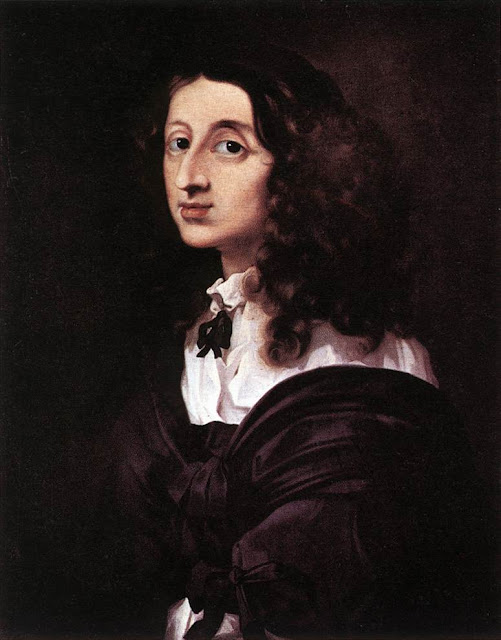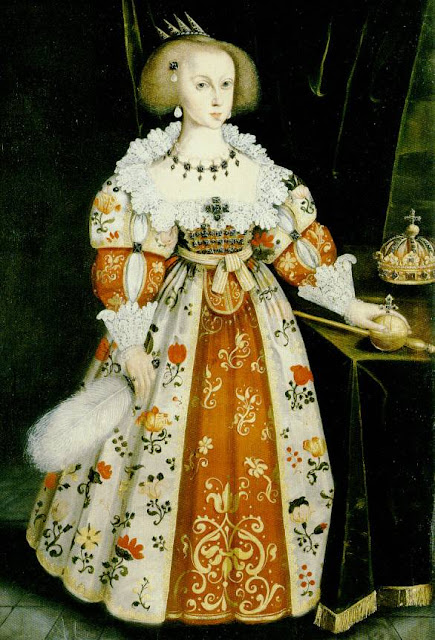
Palazzo Corsini started out in life as Palazzo Riario, built in the 16th century. The famous Queen Christina of Sweden ended her days at Palazzo Riario in the 17th century, as a guest of the Pope.

Determined to convert to Catholicism she surrendered her throne and moved to Rome in the 1650s, where she made a close friend of Bernini and became an active patron of Baroque art (Garbo played her in the movie version).

Christina's bedroom in Palazzo Riario still exists, with walls of multi-colored marble and a gilded ceiling of painted panels telling the story of Moses. She died there in 1689.

Fifty years after that event the Corsini family of Florence bought the building when one of their members became Pope Clement XII. They expanded Palazzo Riario past all recognition, turning it into what we now know as Palazzo Corsini. Luckily, this process spared and preserved Christina's royal bedroom, which is now part of the museum Palazzo Corsini has become.

To tell the truth, the chance to see Christina's death chamber did not motivate my visit. I did not even know about it. What I came to see was another piece of gorgeous red drapery holding together another gorgeous Biblical fantasy of Caravaggio.
As at other Roman museums what surprised and excited me most was the quality and variety of lesser known Italian painters from the 17th century. Seeing so much new and unknown work all at once was the best way I could imagine to understand the vigor of the whole Baroque school in Rome, extending way beyond a few celebrities.
Until the 20th century the Madonna above was labeled as a Caravaggio also. It was clearly a near-copy of the well-known (and genuine) Caravaggio called the Madonna di Loreto which still hangs in the church of Sant' Agostino. Experts eventually reassigned the Corsini Madonna to Gentileschi, who was in fact a friend of Caravaggio. As at the Barberini, the echoes of Caravaggio's light-and-shadows style in the paintings hung around his were too blatant for anybody to miss.
Carlo Maratta was a favorite of the Corsini. The museum displayed several of his paintings, of which I knew nothing before encountering them there. Painting on into the early 18th century, Maratta translated the fading Baroque conventions into cool lofty illustration. Less passion, more classicism. To me, the work was still hugely attractive.
Another surprise, another Poussin. This was another of the early Poussins, almost student work, not terribly exciting, yet full of fascinating additional evidence of his hero-worship of Titian.
Rosa's Prometheus, according to the official catalog entry, "is shocking for the violence (not devoid of a certain gratification) with which the scene is depicted." This was the Baroque run amok – into gore-porn (so very popular in 21st century America – and far more familiar to us than to 17th century Romans). But the Corsini themselves must have liked it well enough to buy it.








